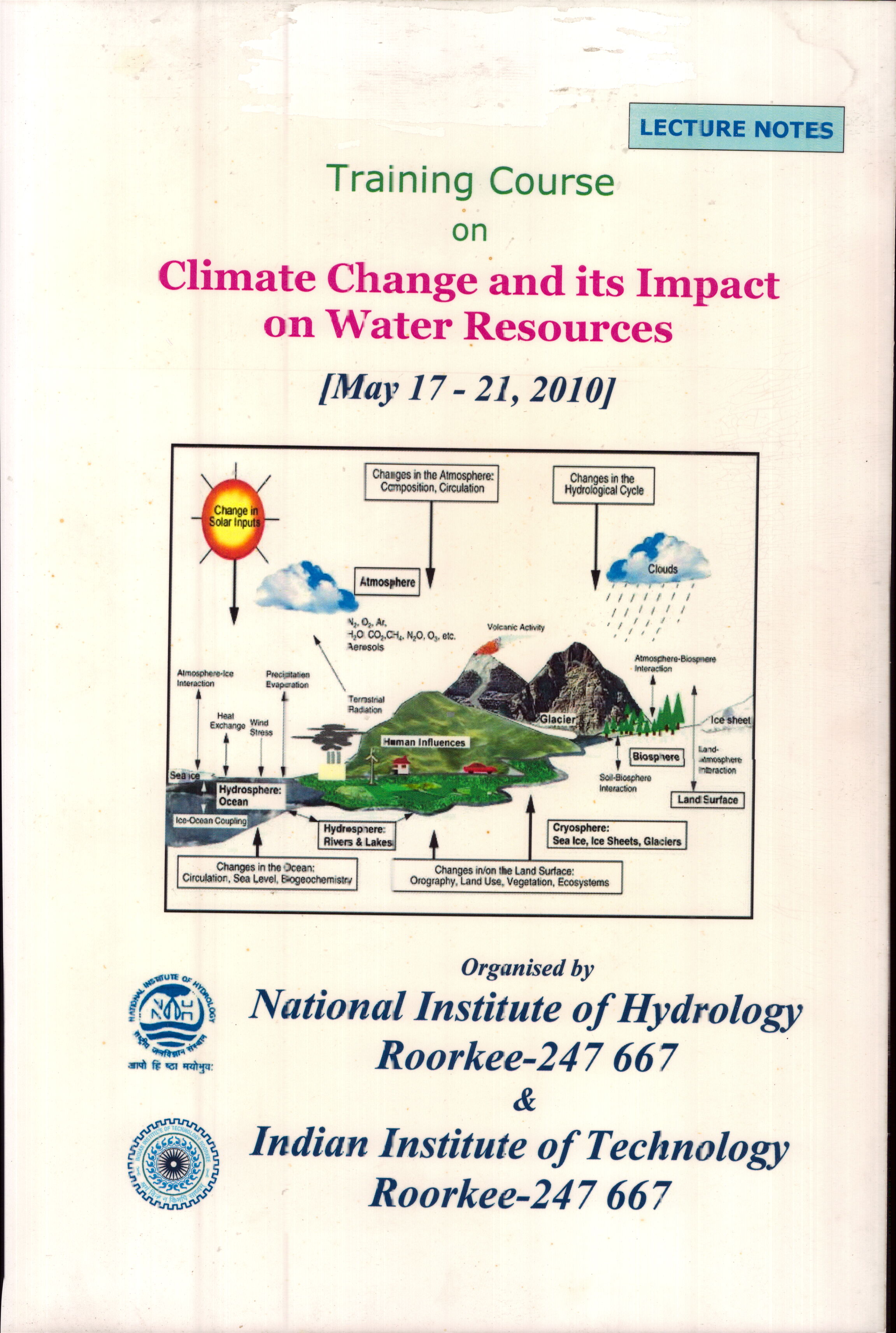DSpace Repository
27-Training Course on Climate Change And Its Impact on Water Resources, 17-21 May 2010 at National Institute of Hydrology, Roorkee (India)
- DSpace Home
- →
- Conference Proceedings
- →
- National Seminar/Workshop
- →
- 27-Training Course on Climate Change And Its Impact on Water Resources, 17-21 May 2010 at National Institute of Hydrology, Roorkee (India)
JavaScript is disabled for your browser. Some features of this site may not work without it.
27-Training Course on Climate Change And Its Impact on Water Resources, 17-21 May 2010 at National Institute of Hydrology, Roorkee (India)
Browse by

Recent Submissions
-
Contents (National Institute of Hydrology, 2010)
-
(National Institute of Hydrology, 2010)Climate of region represents the long-term average of weather (more than thirty years). It is a resultant of extremely complex system consisting of different meteorological variables, which vary with time. Climate in a ...
-
(National Institute of Hydrology, 2010)Water is indispensable to sustain life on Earth. It is needed in large volumes virtually in any human activity. Therefore, adverse changes in availability of water, in both quantity and quality contexts (too little, too ...
-
(National Institute of Hydrology, 2010)In climate change studies, the temporal scales could vary from a very short time interval of 5 minutes (for urban water cycle) to a yearly time scale (for annual water balance computation). The spatial resolutions could ...
-
(National Institute of Hydrology, 2010)The Intergovernmental Panel on Climate Change (IPCC) was founded in 1988 by the World Meteorological Organization (WMO) and the United Nations Environment Programme (UNEP). It is open to all members of WMO and UNEP, and ...
-
(National Institute of Hydrology, 2010)SWAT (Soil and Water Assessment Tool) is a conceptual, continuous time model that was developed in the early 1990s to assist water resource managers in assessing the impact of land management practices on water, sediment ...
-
(National Institute of Hydrology, 2010)snowmelt is a vital component of the streamflow for the Himalayan river system. The spring and summer runoff, comprising mostly snowmelt, is the main source of water for irrigation, hydroelectric power and drinking water ...
-
(National Institute of Hydrology, 2010)Climate is one of the key parameters in the earth's environment. Climate is usually defined as the average weather and in broad sense, it is the statistical description in terms of the mean and variability of relevant ...
-
(National Institute of Hydrology, 2010)There is a robust scientific consensus that Earth's climate has changed and will continue to change as human activities increases the concentrations of green house gases in the atmosphere. Since the beginnings of concern ...
-
(National Institute of Hydrology, 2010)The climate varies naturally on all time-scales. Variations may occur due to forces such as volcanic eruptions or changes in the Sun's output of energy. They may also be generated by interactions among the different ...
-
(National Institute of Hydrology, 2010)Climate change is defined as "a change of climate which is attributed directly or indirectly to human activity that alters the composition of the global atmosphere and which is in addition to natural climate variability ...
-
(National Institute of Hydrology, 2010)Climate change is one of the major challenges to researchers in recent times. The impact of climate change on water resources around the globe has serious implications like, changing water levels and climatic temperatures ...
-
(National Institute of Hydrology, 2010)Water is indispensable for life, but its availability at a sustainable quality and quantity is threatened by many factors, of which climate plays a leading role. The Intergovernmental Panel on Climate Change (IPCC) defines ...
-
(National Institute of Hydrology, 2010)Climate change refers to a change in the state of the climate that can be identified by changes in the mean and/or the variability of its properties, and that persists for an extended period, typically decades or longer ...